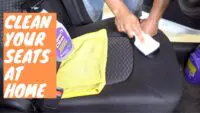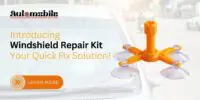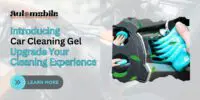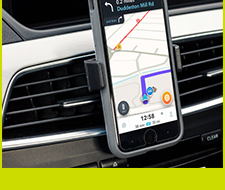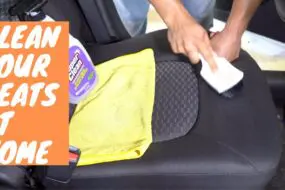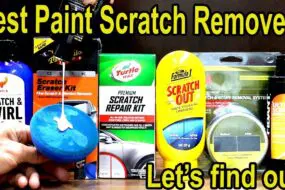
Car wax and ceramic coating are both popular for car care. Each has its own benefits.
Are you wondering which option is better for your vehicle? Wax has been a trusted method for years, providing a glossy finish and protection. Ceramic coating, however, promises longer-lasting results and better durability. Both options aim to protect and enhance the appearance of your car.
Comparing them helps you decide the best fit for your needs. This guide will explore the differences, benefits, and drawbacks of car wax and ceramic coating. By understanding these, you can make an informed choice to keep your car looking its best. So, let’s dive into the world of car care and find out which is the better option for you.
Introduction To Car Protection
Every car owner wants to keep their vehicle looking new and shiny. Protecting your car’s exterior is crucial. The right protection can prevent damage and maintain value. Two popular methods for car protection are car wax and ceramic coating. Let’s explore both options.
Importance Of Car Protection
Protecting your car helps in multiple ways. It keeps the paint from fading. It prevents scratches and other damage. Protection also helps in maintaining the car’s resale value. A well-protected car looks appealing and lasts longer.
Neglecting car protection can lead to costly repairs. Sun, rain, and pollutants can damage the car’s surface. Regular protection ensures your car stays in top condition.
Common Methods
There are several methods to protect your car. The most common ones are:
- Car Wax
- Ceramic Coating
Both methods offer unique benefits. Let’s dive deeper into each.
| Feature | Car Wax | Ceramic Coating |
|---|---|---|
| Durability | Few months | Several years |
| Application | Easy, DIY | Professional, Complex |
| Cost | Low | High |
| Shine | High | High |
Both car wax and ceramic coating have their pros and cons. Choosing the right method depends on your needs and budget.
Credit: www.reddit.com
What Is Car Wax?
Car wax is a protective coating applied to a car’s paint. It enhances the shine and provides a layer of protection against environmental damage. Car wax is made from natural waxes, synthetic polymers, or a combination of both. It has been used for decades to maintain and protect vehicle paint.
Types Of Car Wax
There are several types of car wax available on the market. Each type has its own benefits and drawbacks. Here are the main types:
- Natural Wax: Made from natural ingredients like carnauba. Offers a deep, rich shine.
- Synthetic Wax: Composed of synthetic polymers. Provides long-lasting protection.
- Spray Wax: Easy to apply and quick to use. Ideal for touch-ups.
- Paste Wax: Traditional form. Requires more effort to apply but offers excellent results.
- Liquid Wax: Easier to apply than paste wax. Provides good shine and protection.
Benefits Of Car Wax
Using car wax provides several benefits for your vehicle:
- Enhanced Shine: Car wax gives your car a glossy finish.
- Protection: It protects the paint from UV rays, dirt, and contaminants.
- Water Beading: Wax causes water to bead up and roll off the surface.
- Ease of Cleaning: Waxed surfaces are easier to clean.
- Cost-Effective: Car wax is more affordable than other coatings.
Limitations Of Car Wax
While car wax offers many benefits, it also has some limitations:
- Durability: Car wax does not last as long as ceramic coatings.
- Frequency: Requires frequent reapplication, usually every few months.
- Application Effort: Applying wax can be time-consuming and labor-intensive.
- Limited Protection: Provides less protection against harsh elements and chemicals.
- Temperature Sensitivity: Performance can be affected by extreme temperatures.
What Is Ceramic Coating?
Ceramic coating is a liquid polymer applied to a car’s exterior. This coating bonds with the car’s paint to create a protective layer. Unlike traditional wax, ceramic coating offers long-lasting protection.
How Ceramic Coating Works
Ceramic coating works by creating a chemical bond with the car’s paint. This bond forms a hard layer that shields the paint from damage. Dirt, water, and other contaminants cannot easily penetrate this layer.
This coating also gives the car a glossy finish. The shine lasts longer than what you get with regular wax. The protective layer reduces the chances of scratches and swirl marks.
Advantages Of Ceramic Coating
- Durability: Lasts for several years, unlike wax which lasts for months.
- Protection: Protects against UV rays, oxidation, and minor scratches.
- Hydrophobic: Repels water and makes cleaning easier.
- Glossy Finish: Provides a long-lasting, shiny appearance.
Drawbacks Of Ceramic Coating
- Cost: More expensive than traditional wax.
- Application: Requires professional application for best results.
- Time: Takes longer to apply compared to waxing.
Credit: www.torquedetail.com
Cost Comparison
Choosing between car wax and ceramic coating often comes down to the cost. Each option has different initial and long-term expenses. Understanding these costs can help you make an informed decision.
Initial Costs
The initial cost of car wax is quite affordable. You can find car wax products ranging from $10 to $50. On the other hand, ceramic coatings are more expensive. The price for a DIY ceramic coating kit starts at about $50 and can go up to $150.
If you choose to have a professional apply the ceramic coating, the cost increases significantly. Professional ceramic coating services range from $500 to $2,000. This higher cost reflects the labor and expertise required for proper application.
Long-term Expenses
While the initial cost of car wax is low, it requires frequent reapplication. Most car owners need to wax their cars every 2-3 months. Over time, these costs add up. Let’s consider the average cost of car wax is $30. If you wax your car four times a year, that’s $120 per year.
Ceramic coating, despite its higher initial cost, offers longer-lasting protection. A quality ceramic coating can last 2-5 years. This means fewer reapplications and lower long-term expenses. If you spend $1,000 on a professional ceramic coating that lasts four years, the annual cost is $250.
Here’s a table to compare the costs:
| Expense | Car Wax | Ceramic Coating |
|---|---|---|
| Initial Cost | $10 – $50 | $50 – $2,000 |
| Annual Long-term Cost | $120 (assuming $30 per wax, 4 times a year) | $250 (assuming $1,000 professional coating lasting 4 years) |
In summary, car wax has a lower initial cost but higher long-term expenses due to frequent reapplications. Ceramic coating, while expensive upfront, can be more cost-effective over time.
Durability And Longevity
One of the most important factors in choosing between car wax and ceramic coating is their durability and longevity. The lifespan of both products varies greatly. It impacts how often you need to reapply them and the level of protection they offer to your car’s paint.
Lifespan Of Car Wax
Car wax is known for offering a shiny finish. But how long does it last? On average, car wax lasts for about 2-3 months. This means you need to reapply it every few months to maintain the shine and protection.
Weather conditions and how often you drive can affect its lifespan. Regular washing and exposure to harsh sunlight can reduce the effectiveness of the wax. Thus, frequent reapplication becomes necessary.
| Type of Wax | Average Lifespan |
|---|---|
| Natural Carnauba Wax | 1-2 months |
| Synthetic Wax | 2-3 months |
Lifespan Of Ceramic Coating
Ceramic coating offers a longer lifespan compared to car wax. A professional ceramic coating can last for 2-5 years. This long-lasting protection makes it an attractive option for car owners.
The durability of ceramic coating depends on the quality of the product and application. Proper maintenance can extend its lifespan, reducing the need for frequent reapplications.
- Professional-grade coatings last up to 5 years.
- DIY kits can last between 1-2 years.
Overall, ceramic coating provides a more durable and long-lasting solution. It protects your car’s paint better over time compared to traditional car wax.

Credit: www.turtlewax.com
Application Process
The application process is a key factor when deciding between car wax and ceramic coating. Each method has its own steps, tools, and time requirements. Understanding these can help you choose the right option for your vehicle.
Applying Car Wax
Applying car wax is relatively simple and can be done at home. Here is a step-by-step guide:
- Wash and dry your car: Ensure the surface is clean and dry.
- Apply the wax: Use a foam applicator pad to apply a thin layer of wax.
- Let it dry: Wait for the wax to haze over.
- Buff the wax: Use a microfiber cloth to buff the wax off, revealing a shiny surface.
Tools needed:
- Foam applicator pad
- Microfiber cloth
- Quality car wax
This process can take about 1-2 hours depending on the size of your car.
Applying Ceramic Coating
Ceramic coating requires more time and precision. It’s best to have it done by professionals, but you can do it yourself with the right tools. Here is how:
- Wash and dry your car: Clean the surface thoroughly.
- Clay bar treatment: Use a clay bar to remove any contaminants.
- Polish the surface: Ensure the paint is free from imperfections.
- Apply the ceramic coating: Use an applicator pad to spread the coating evenly.
- Allow it to cure: Let the coating cure for the recommended time.
- Buff the surface: Use a microfiber cloth to buff any excess coating.
Tools needed:
- Clay bar
- Polisher
- Applicator pad
- Microfiber cloth
- Ceramic coating product
This process can take 4-8 hours, and curing time can vary.
Maintenance Requirements
Maintaining the appearance of your car is crucial. Both car wax and ceramic coating can protect your vehicle’s paint. But each option has different maintenance requirements. Let’s explore these differences to help you decide which is better for you.
Maintaining Car Wax
Car wax requires regular application. You need to reapply it every few months. The exact frequency depends on the type of wax and your driving conditions. To maintain car wax:
- Wash your car regularly with a gentle car shampoo.
- Apply wax in a shaded area to avoid quick drying.
- Use a clean, soft cloth for application and buffing.
Waxing your car can take time. It involves careful application and buffing. You might also need to clay bar your car before waxing. This removes contaminants and ensures a smooth surface.
Maintaining Ceramic Coating
Ceramic coating offers longer-lasting protection. You don’t need to reapply it as often as wax. A professional application can last several years. To maintain ceramic coating:
- Wash your car with a pH-neutral car shampoo.
- Avoid automatic car washes with harsh chemicals.
- Use a microfiber cloth to dry your car.
Ceramic coating reduces the need for frequent maintenance. It forms a strong bond with your car’s paint. This makes it resistant to dirt, water, and UV rays. Regular washing keeps the coating effective and your car looking shiny.
| Maintenance Aspect | Car Wax | Ceramic Coating |
|---|---|---|
| Reapplication Frequency | Every few months | Every few years |
| Time Required | High | Low |
| Durability | Moderate | High |
Expert Opinions
Choosing between car wax and ceramic coating can be difficult. Both have their advantages. To help you decide, we gathered expert opinions.
Professional Recommendations
Professionals in the car care industry offer valuable insights. They often recommend ceramic coating for its durability. It provides long-term protection for your car’s paint. Ceramic coatings can last several years. They are more resistant to environmental damage.
Car wax, on the other hand, needs frequent reapplication. Professionals suggest it for those who enjoy regular car maintenance. It can enhance your car’s shine and is easier to apply.
| Aspect | Car Wax | Ceramic Coating |
|---|---|---|
| Durability | Lasts a few months | Lasts several years |
| Ease of Application | Easy | Requires professional application |
| Protection Level | Moderate | High |
User Experiences
Many car owners share their experiences with both options. Users of car wax appreciate its simplicity. It is easy to apply at home. They like the immediate shine it provides.
Users of ceramic coating praise its long-lasting effect. They enjoy the lasting protection against scratches and UV rays. Some mention the initial cost is high. But they find it worth it for the long-term benefits.
Here are some common experiences:
- Car Wax: Quick and easy application, frequent reapplication needed, immediate shine.
- Ceramic Coating: Higher initial cost, professional application needed, long-lasting protection.
Frequently Asked Questions
What Is The Difference Between Car Wax And Ceramic Coating?
Car wax provides a protective layer and enhances shine. Ceramic coating offers a more durable, long-lasting protection. It also resists environmental damage better.
How Long Does Car Wax Last Compared To Ceramic Coating?
Car wax typically lasts a few weeks to a few months. Ceramic coating can last several years with proper maintenance.
Is Ceramic Coating Worth The Investment For My Car?
Ceramic coating is worth the investment if you seek long-term protection. It reduces maintenance, enhances shine, and offers superior protection.
Can I Apply Ceramic Coating Myself?
While you can apply ceramic coating yourself, professional application is recommended. It ensures the best results and long-lasting protection.
Conclusion
Choosing between car wax and ceramic coating depends on your needs. Wax offers a simpler application and short-term shine. Ceramic coating provides lasting protection and durability. Both options have pros and cons. Consider your budget and desired maintenance level. For a quick, affordable shine, wax works well.
For long-term protection, ceramic coating is the best choice. Make an informed decision that suits your car care routine. Your car’s appearance and protection are worth the effort.





